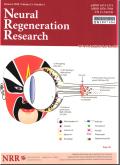干细胞与三维生物打印支架在脊髓损伤修复中的联合应用
IF 5.9
2区 医学
Q2 CELL BIOLOGY
引用次数: 0
摘要
脊髓损伤被认为是最难修复的损伤之一,也是神经系统损伤中预后最差的损伤之一。手术后,神经细胞的再生能力差和新疤痕的产生使得受损的神经系统很难恢复其神经功能。传统的治疗方法只能减轻继发性损伤,而不能从根本上修复脊髓。因此,迫切需要开发新的治疗方法来促进脊髓损伤后的功能修复。近年来,在使用干细胞治疗脊髓损伤方面取得了一些进展。随着组织工程领域的重大发展,三维生物打印技术因其能够精确打印复杂结构而成为一个热门的研究课题。这导致了三维生物打印支架的加载,提供了精确的细胞定位。这些三维生物打印支架可以修复受损的神经回路,并有可能修复受损的脊髓。在本文中,我们讨论了简单干细胞治疗的机制,不同类型的干细胞在脊髓损伤治疗中的应用,以及三维生物打印支架的不同制造方法。特别是,我们专注于开发用于治疗脊髓损伤的三维生物打印支架。本文章由计算机程序翻译,如有差异,请以英文原文为准。
The combined application of stem cells and three-dimensional bioprinting scaffolds for the repair of spinal cord injury
Abstract Spinal cord injury is considered one of the most difficult injuries to repair and has one of the worst prognoses for injuries to the nervous system. Following surgery, the poor regenerative capacity of nerve cells and the generation of new scars can make it very difficult for the impaired nervous system to restore its neural functionality. Traditional treatments can only alleviate secondary injuries but cannot fundamentally repair the spinal cord. Consequently, there is a critical need to develop new treatments to promote functional repair after spinal cord injury. Over recent years, there have been several developments in the use of stem cell therapy for the treatment of spinal cord injury. Alongside significant developments in the field of tissue engineering, three-dimensional bioprinting technology has become a hot research topic due to its ability to accurately print complex structures. This led to the loading of three-dimensional bioprinting scaffolds which provided precise cell localization. These three-dimensional bioprinting scaffolds could repair damaged neural circuits and had the potential to repair the damaged spinal cord. In this review, we discuss the mechanisms underlying simple stem cell therapy, the application of different types of stem cells for the treatment of spinal cord injury, and the different manufacturing methods for three-dimensional bioprinting scaffolds. In particular, we focus on the development of three-dimensional bioprinting scaffolds for the treatment of spinal cord injury.
求助全文
通过发布文献求助,成功后即可免费获取论文全文。
去求助
来源期刊

Neural Regeneration Research
CELL BIOLOGY-NEUROSCIENCES
CiteScore
8.00
自引率
9.80%
发文量
515
审稿时长
1.0 months
期刊介绍:
Neural Regeneration Research (NRR) is the Open Access journal specializing in neural regeneration and indexed by SCI-E and PubMed. The journal is committed to publishing articles on basic pathobiology of injury, repair and protection to the nervous system, while considering preclinical and clinical trials targeted at improving traumatically injuried patients and patients with neurodegenerative diseases.
 求助内容:
求助内容: 应助结果提醒方式:
应助结果提醒方式:


